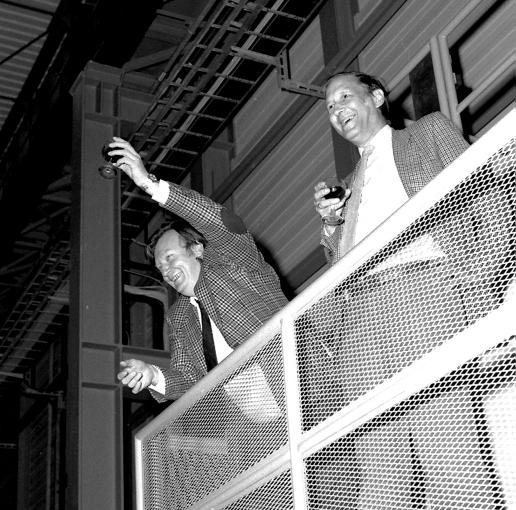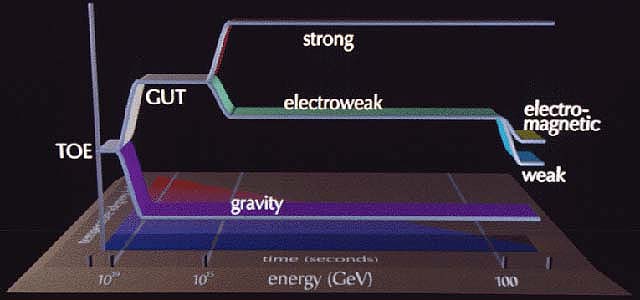
Carlo Rubbia and Simon van der Meer celebrating their Nobel Prize in 1984.
The first step to unifying the forces was made by Scottish mathematician James Clerk Maxwell in the latter half of the 19th century. He realised that electricity and magnetism had a lot in common and wrote down a theory to describe them both. Then in the 1960s three scientists, the Americans Sheldon Glashow and Stephen Weinberg along with Pakistani physicist Abdus Salam worked out how to unify electromagnetism and the weak interaction into a single electroweak theory.
The unification had to account for the different ranges of the two interactions, which turned out to be due the masses of the messenger particles. Photons have no mass, which gives them infinite range. The hypothesised carriers of the weak interaction had to be very massive to confine their range to the scale of nuclei.
In the 19th century Maxwell unified electricity and magnetism into a single theory: electromagnetism. About a century later Glashow, Salam, and Weinberg developed a theory that united electromagnetism and the weak interaction: the electroweak theory. The three shared the Nobel Prize in 1979.
Confirming the electroweak theory rested upon finding the W and Z particles and CERN soon entered the hunt. In 1983, the Laboratory's efforts were successful, bringing the Nobel prize to CERN for the first time the following year. Two CERN physicists were honoured, Carlo Rubbia and Simon van der Meer. With this triumph under its belt, CERN then turned its efforts to studying W and Z particles in detail, and studying Z particles is what you will be doing later with the projects.

Carlo Rubbia and Simon van der Meer celebrating their Nobel Prize in 1984.
Unification still has to bring in the strong interaction and gravity to fulfil its ultimate goal. These will be harder to incorporate, since their strengths are so much different - electromagnetism and the weak interaction have comparatively similar strengths.
Physicists believe that the higher the energy of particle interactions, the closer together the strengths of the different interactions become, so that at some very high energy they do indeed become unified into a single interaction.

The ultimate theory would describe the single primitive interaction out of which the Universe was born.
Evidence that this idea may be right has already been seen. Experiments have shown that the strengths of interactions change with the energy of collisions. You will be doing this in the second project.